QuestionWe have had our tank for about 5 weeks. We have a 30 gallon tank and started out with 13 goldfish (received at a carnival) and 2 small sucker fish. Our first sucker fish died after 2 weeks, then I noticed that most of the fist were getting red spots on their fins and tails. Our other sucker died a week later. I put in 3 tablets of Parasite clear and the red spots went away. I noticed a few of them were missing a small amount of tail. I did the water test and it came up with an ammonia problem. I put in Ammonia Chloramine Eliminator, but the ammonia was still testing very high. I did a partial water change. A friend said to try melafix, so I put a dose of that in about 4 days ago. I checked at Petsmart this weekend, and they said I have way too many goldfish and I should get rid of most of them. I did have one that had no tail fin left and he would not come out in the light, and he still had red spots on him, so they told me to get him out of the tank, which I did. I have noticed that now a few of the fish are getting black areas on them. Yesterday we did a complete water change and also put in c-100 pillows that are supposed to help with ammonia. Now today, one of the fish that I noticed before that his tail seemed like it was disentigrating, but today it is covered in a white cloudy stuff. I don't know if I should remove him, if he is terminally ill or what. I also am not sure the petsmart people told me correctly about how many goldfish I can have in a 30 gallon tank. My filter is an aqua-tech 20/40. The conditioner I used is aqua plus tap water conditioner. I know I have gone on, but I don't want these fish to suffer. Thanks for any insight!
AnswerHi Tammy;
This is all due to "New Tank Syndrome". Ammonia will be elevated for a while and then nitrite will come up as the ammonia goes down. The nitrite will go down eventually after a total of 6 to 8 weeks as beneficial bacteria colonies mature. You have to start very slowly with a new tank and introduce only one inch of fish for every 10 gallons for the first 6 to 8 weeks. If there are too many fish the toxins become so high that the fish die or become very sick and get infections on their irritated and burned skin. Even when established, a 30 gallon tank should only have 3 to 5 goldfish in it. They get 6 to 8 inches long and need lots of space. They are very messy deep-bodied fish.
The first thing to do is to make a 25% water change and stop adding chemicals and other medicines. The water change will lower the ammonia and adding chemicals other than water conditioner only burns the fish more. Do a 25% water change every day for the next 5 days. This makes the fish feel better without shocking them too much. It also leaves some of the toxins still there for the developing beneficial bacteria to feed on.
There are only 3 things you need to add to the water right now. A good water conditioner, aquarium salt and the Melafix. The water conditioner will dechlorinate the water and help the fish with stress. (Don't use any more ammonia remover. It messes up ammonia test results and makes you think ammonia is still in there long after it is gone.) The salt helps the fish with stress and strengthens their slime coating to fight off infection. The salt also helps kill infections. The Melafix is a natural product that soothes the skin and gills. Much better to use it than chemicals or antibiotics. To add the salt, use 1/2 teaspoon for every gallon of water the first time. After that, only add 1/2 teaspoon for every gallon of water replaced during a water change. The idea is to only treat replaced water and not the whole tank every time. The salt concentration will stay the same.
Here is my article on new tanks to help you understand what has happened;
**********
New Tank Syndrome or Break-in Period
So you have a new tank and you filled it up, put the filter together, mounted the heater into place and turned on the lights. You have all the plants and decorations where you want them....
You are ready for fish.
But, your filter is not ready for a full tank of fish yet.
The filter is running and moving the water and cleaning out crud, right? Of course!
But a very important part of your filter is the part you can't see. An aquarium filter removes the larger visible stuff, but it also must remove the dissolved fish waste that turns into ammonia in the water. To do this, special bacteria must grow in the filter system and on the particles of gravel in the bottom of your tank. This process occurs even on a limited scale in little fish bowls that have no filter in them.
This is "New-Tank Syndrome" or the "Break-in Period". The entire process takes 6 to 8 weeks to complete because these "nitrifying" bacteria grow quite slowly.
Start off with only one or two hardy fish (no more than 2 total inches of fish) for every ten gallons of water and don't add more until the 6 to 8 weeks has gone by. Hard to be patient, but it is worth it to keep your fish alive and healthy. As a matter of fact, the bacteria cannot develop without fish in the tank. You can let that tank sit forever without fish in it, but as soon as the first fish goes in the process begins. Avoid changing the filter pads during break-in. This removes the bacterial colonies that are essential to a balanced aquarium. You can rinse the filter pad out in a container of aquarium water. This will preserve most of the bacteria colonies while still allowing your filter to flow freely. Even using bacteria additives and water conditioners when you first set up the tank will not make a tank begin the cycle by itself. If there are no fish to provide food (fish waste) for the bacteria, the beneficial bacteria cultures will die and you will have to start the colonies all over again once fish are added to the tank. Once the tank has completed the initial cycle, you can change the filter pads every 4 weeks or so. But for now, just rinse them.
Feed your new fish VERY lightly. Any excess food will cause additional waste your system cannot afford to have right now. If you see food floating around or lying on the plants and gravel after five minutes, too much food is going into the tank. Cut back a little each time you feed until it is ALL gone 5 minutes after you feed them. Feed them once a day.
During this "break-in period" your tank will become cloudy and milky looking. You may have to tolerate this for the entire break-in period but it is only temporary. Changing 25% of the water three times a week until the break-in period is over helps a great deal. Changing water reduces the ammonia and nitrites that rise while the bacteria continues to multiply. If ammonia and/or nitrites become too high, your fish will become stressed and possibly die. Use a good water conditioner when you replace the water and make sure it is the right temperature to avoid shocking your fish.
When the break-in is over after 6 to 8 weeks and there are no nitrites or ammonia present in the water you can slowly add more fish. Add one or two every week until you reach the desired population. This allows the bacteria to adjust to the new population every time before adding more. Monitor the nitrites and ammonia to be sure they don't come up. If they do, make a 25% water change and check them again. Don't add the next fish until the levels are down again.
The safe maximum population for any size tank is one inch of adult fish for every gallon of water in the tank. Do some research to be sure of the fish you are interested in. Even though they are small when you buy them, you have to base your population calculations on full-sized adult fish. Many hobbyists have up to two inches per gallon but this can be risky. If a water quality issue arises or a disease occurs it will spread fast and furious in an over-populated tank. In any case, 25% water changes every week to two weeks are absolutely essential for the health of your fish.
Following these guidelines will help you get your new tank on the right track.
**********
Followups welcome
At Your Service;
Chris Robbins
Come on over and join us on the freshwater fish forum at About.com to get even more information too;
http://freshaquarium.about.com/od/questionsanswers/a/naavigateforum.htm
My member name is ChrisR62. See You There!

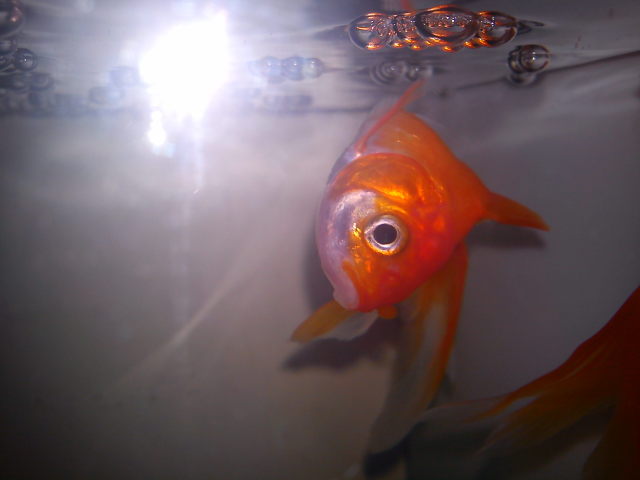 Fancy Goldfish in Distress
Question
Raf
Hello I dont know where to turn the
Fancy Goldfish in Distress
Question
Raf
Hello I dont know where to turn the
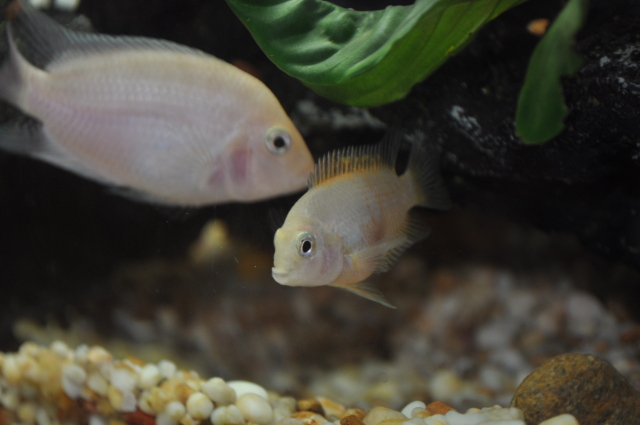 cichlids babies
Question
Cichlid Parents
Hello I am extremely excited a
cichlids babies
Question
Cichlid Parents
Hello I am extremely excited a
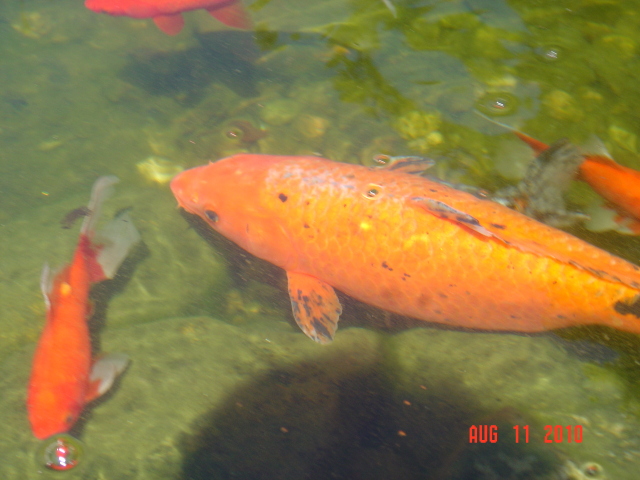 Pond Gold Fish Disease
Question
Gold Fish 040
I have a 4 year old 16 x 21 foot
Pond Gold Fish Disease
Question
Gold Fish 040
I have a 4 year old 16 x 21 foot
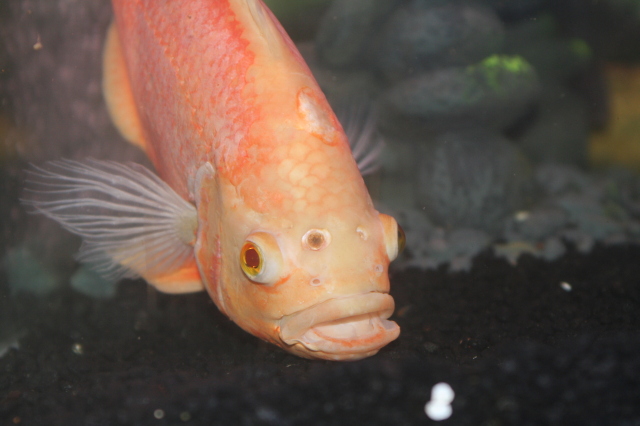 Jack Dempsy
Question
Oscar
Follow-up photo of the Oscar with hole i
Jack Dempsy
Question
Oscar
Follow-up photo of the Oscar with hole i
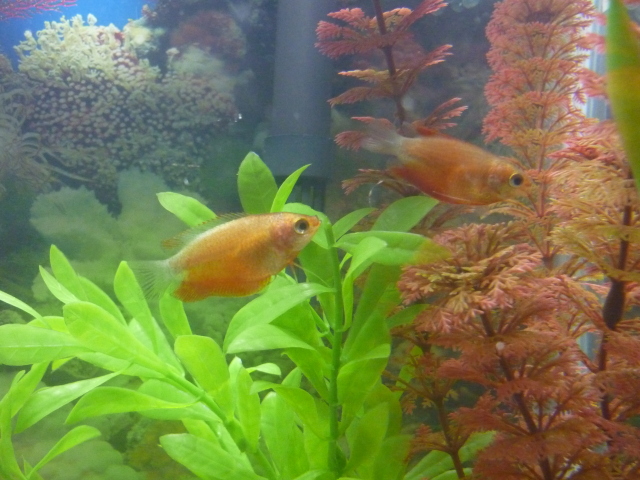 Red Dwarf Gouramis.
Question
Red Gouramis
I recently bought to red dwarf go
Red Dwarf Gouramis.
Question
Red Gouramis
I recently bought to red dwarf go